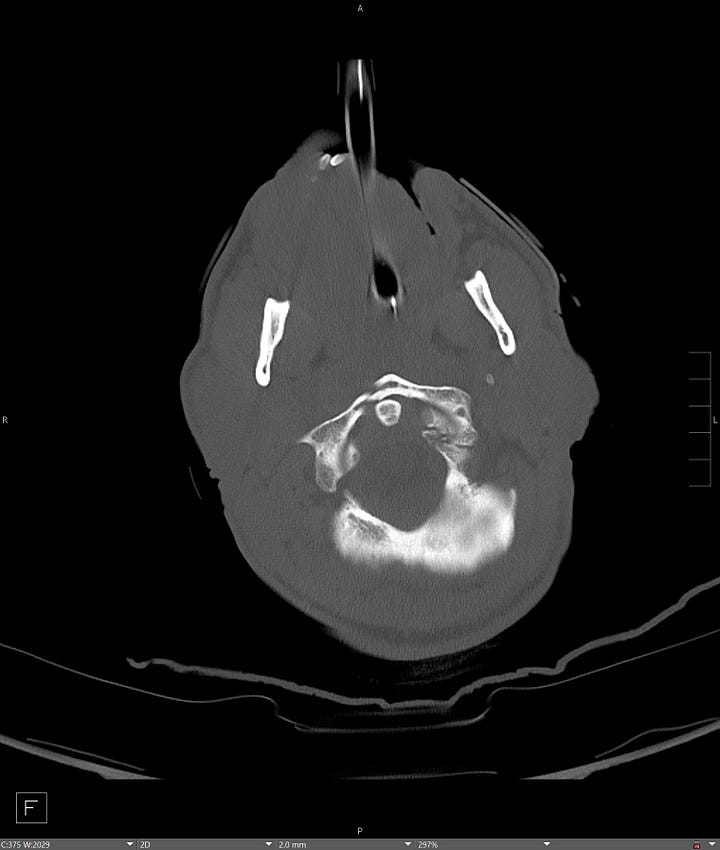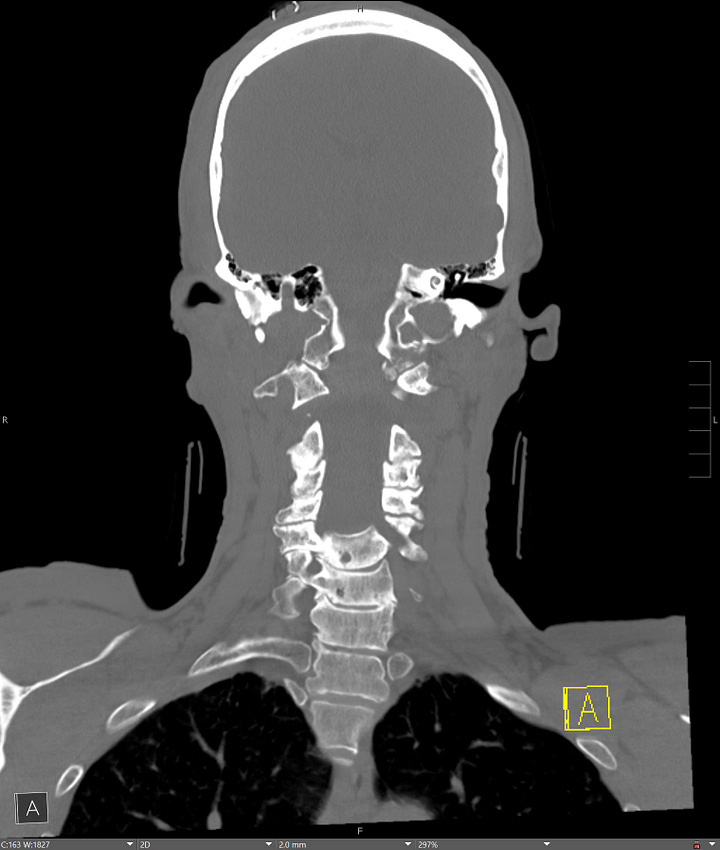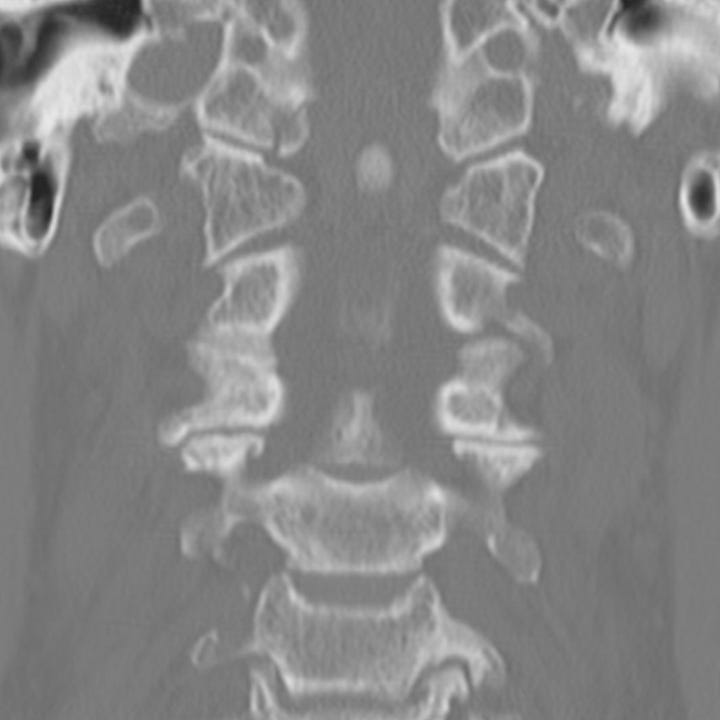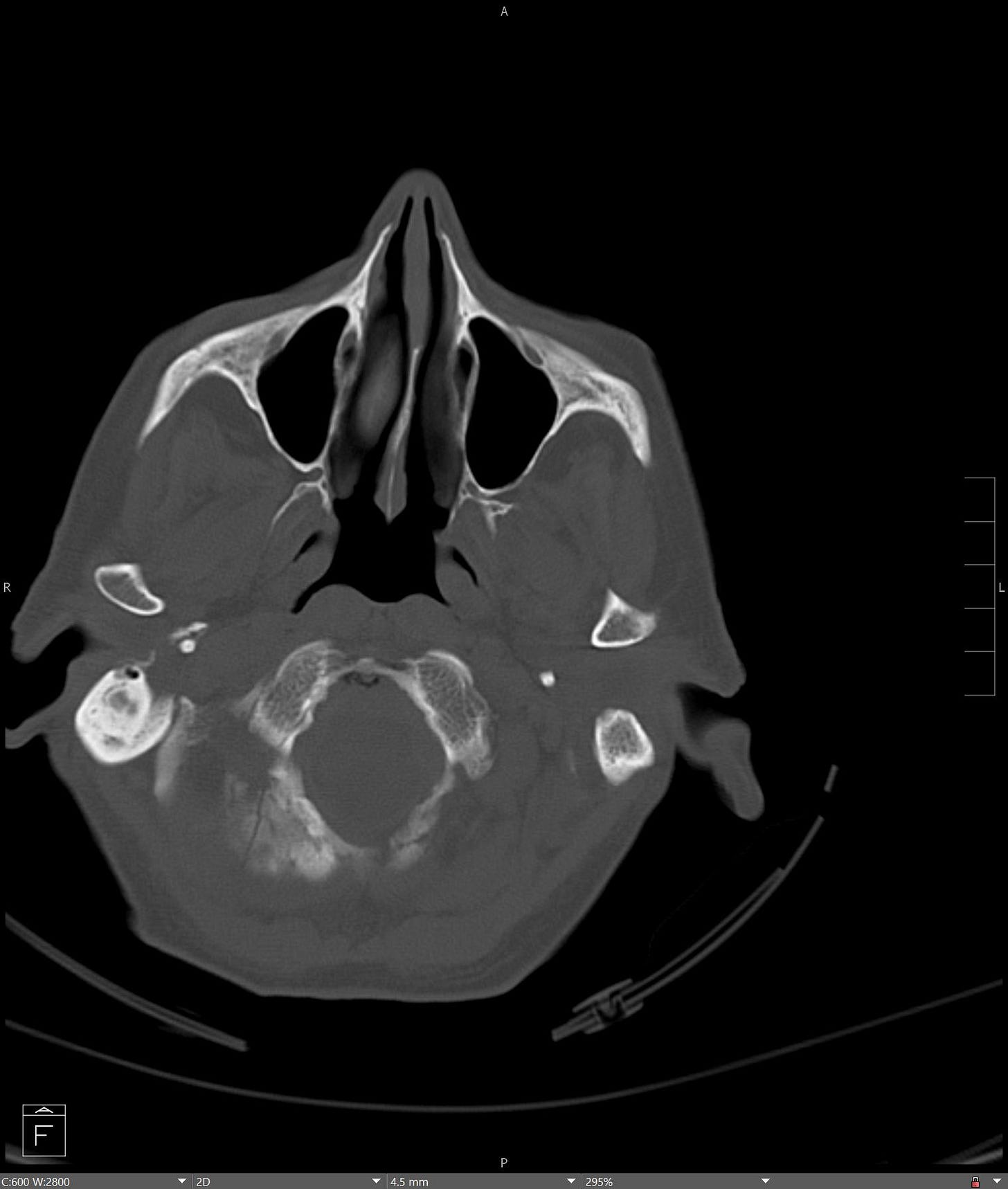Occipital condyle fractures are uncommon, usually stable, injuries that result from axial loading, lateral bending or rotation. They are usually invisible on radiographs but are easily identified on thin section CT and frequently seen in association with other craniocervical junction injuries. Occipital condyle fractures are categorized as follows:
Type I fractures are impacted, comminuted fractures that result from axial loading forces.


Type I occipital condyle fracture. Impacted, comminuted left occipital condyle fracture with associated C1 anterior arch fracture. In addition, the patient had a C2 type II dens fracture (not shown)
Type II fractures are due to direct skull base impact. They are basi-occiput fractures that extend to the occipital condyle.
Type II occipital condyle fracture. Nondisplaced right occipital skull base fracture that extends to the condyle.
Type III fractures are avulsion fractures at the attachment of the alar ligament due to bending and rotational forces.


Type III occipital condyle fracture. Nondisplaced sagittally oriented right occipital condyle fracture due to alar ligament avulsion.
Type I and II fractures are stable and treated nonoperatively, with a cervical brace. While Type III fractures are often managed nonoperatively, if associated with overt ligamentous instability or canal compromise, they may be treated by occipito-cervical fusion.




